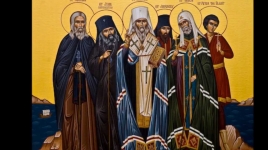Armenian Religious Music
Thursday, February 16, 2023
Armenian religious (or sacred) music, which is predominantly vocal, is one of the oldest branches of Christian culture and was introduced after the Christianization of Armenia in 301 AD. Armenian chant, composed in one of eight modes, is the most common kind of religious music in Armenia. It is written in khaz, a form of indigenous musical notation. Many of these chants are ancient in origin, extending to pre-Christian times, while others are relatively modern, including several composed by Saint Mesrop Mashtots, who also invented the Armenian alphabet. Some of the best performers of these chants, or sharakans, reside at the Holy Cathedral of Etchmiadzin, and include the late soprano Lusine Zakaryan.
Makar Yekmalyan (1856–1905) composed the Patarag, the setting of the Armenian Apostolic Church's Divine Liturgy, which he completed in 1892 in several arrangements and was first published in Leipzig in 1896. This arrangement of the liturgy incorporated polyphonic and homophonic vocal parts into the structure of the Liturgy and saw it be notated in its entirety. This would influence the compositional approach of Komitas, who was Yekmalian's student (along with the works of Kristapor Kara-Murza) and would also see him introduce polyphony with his version of the Liturgy at the end of the 19th century.





